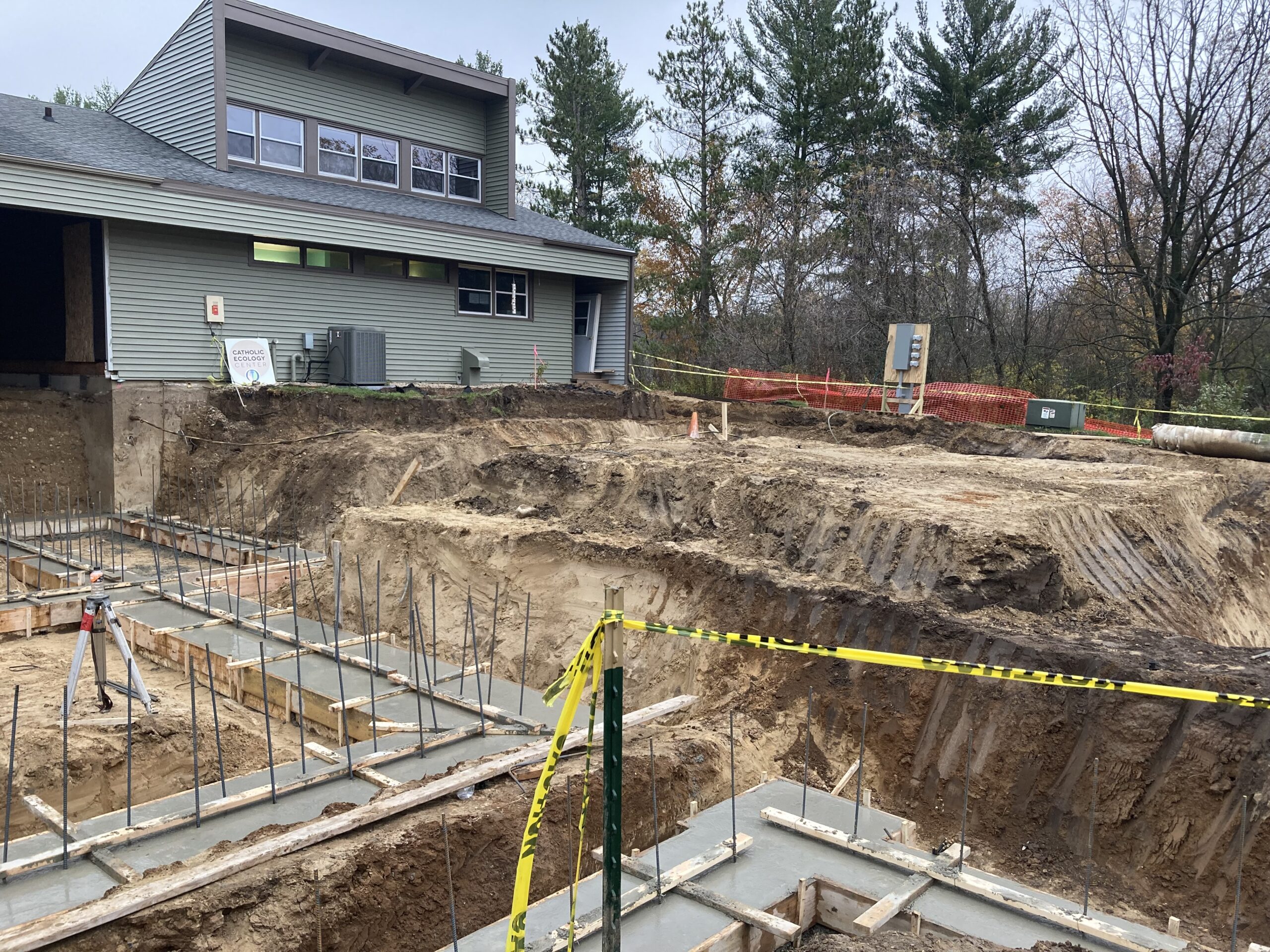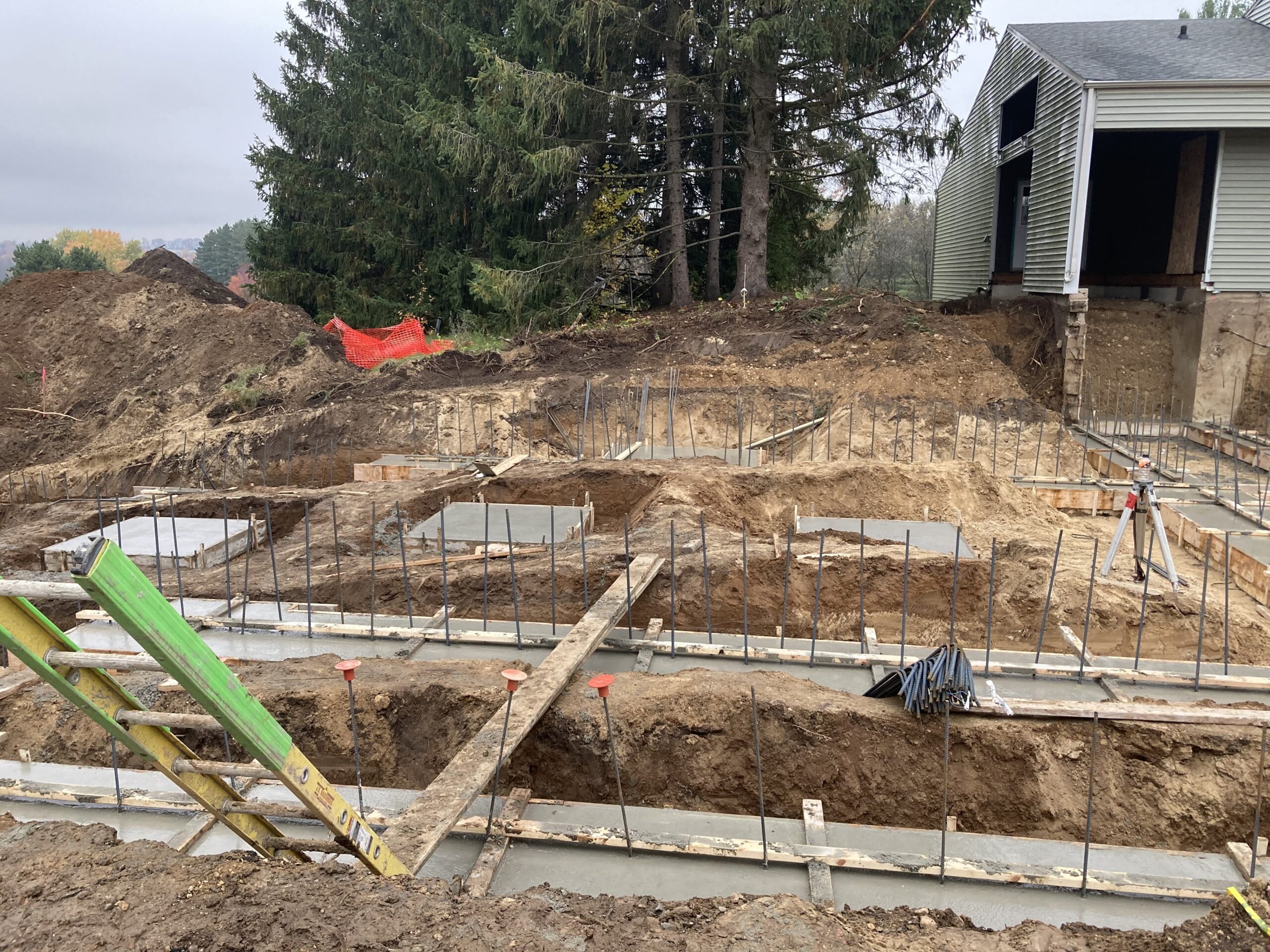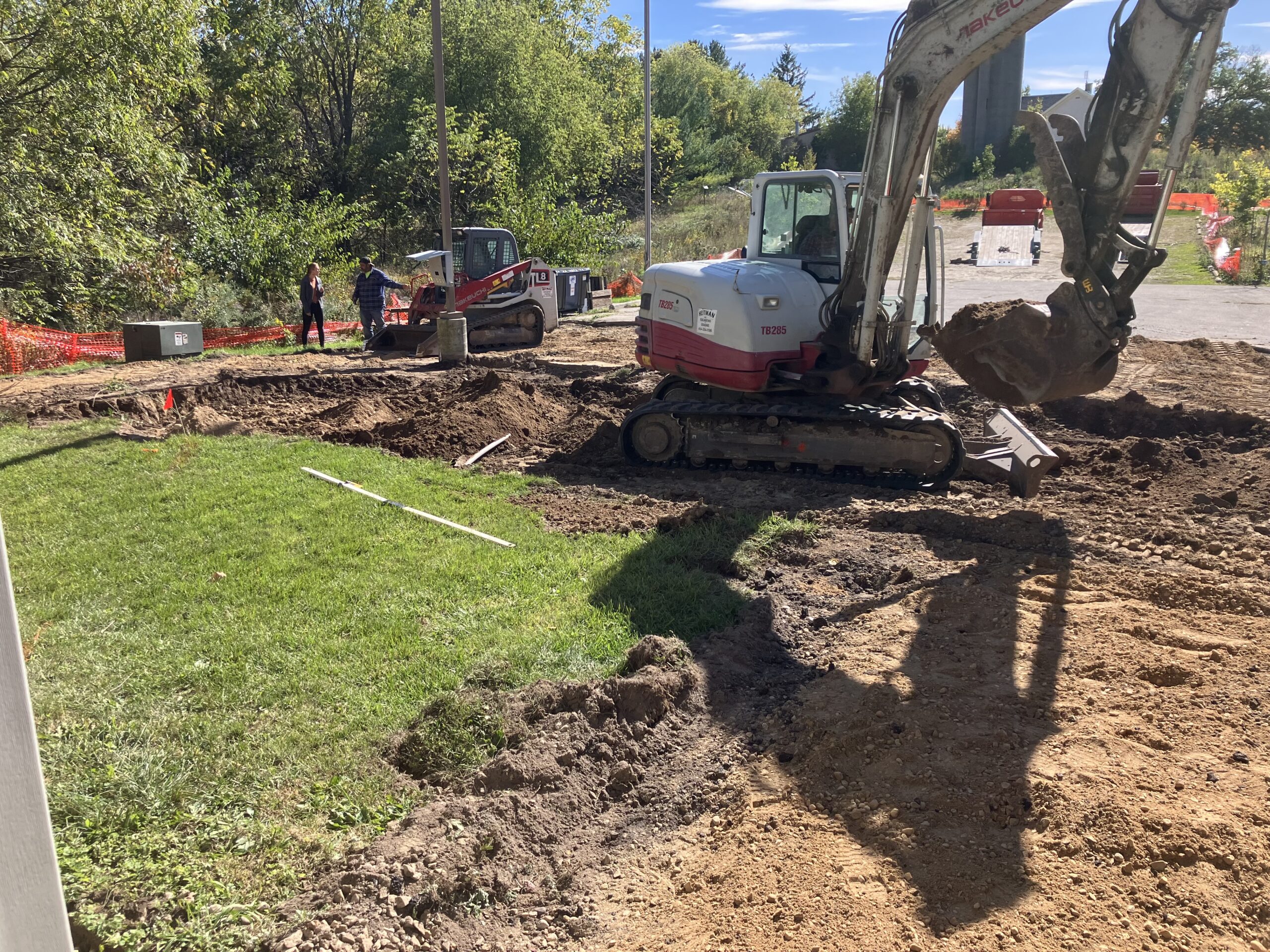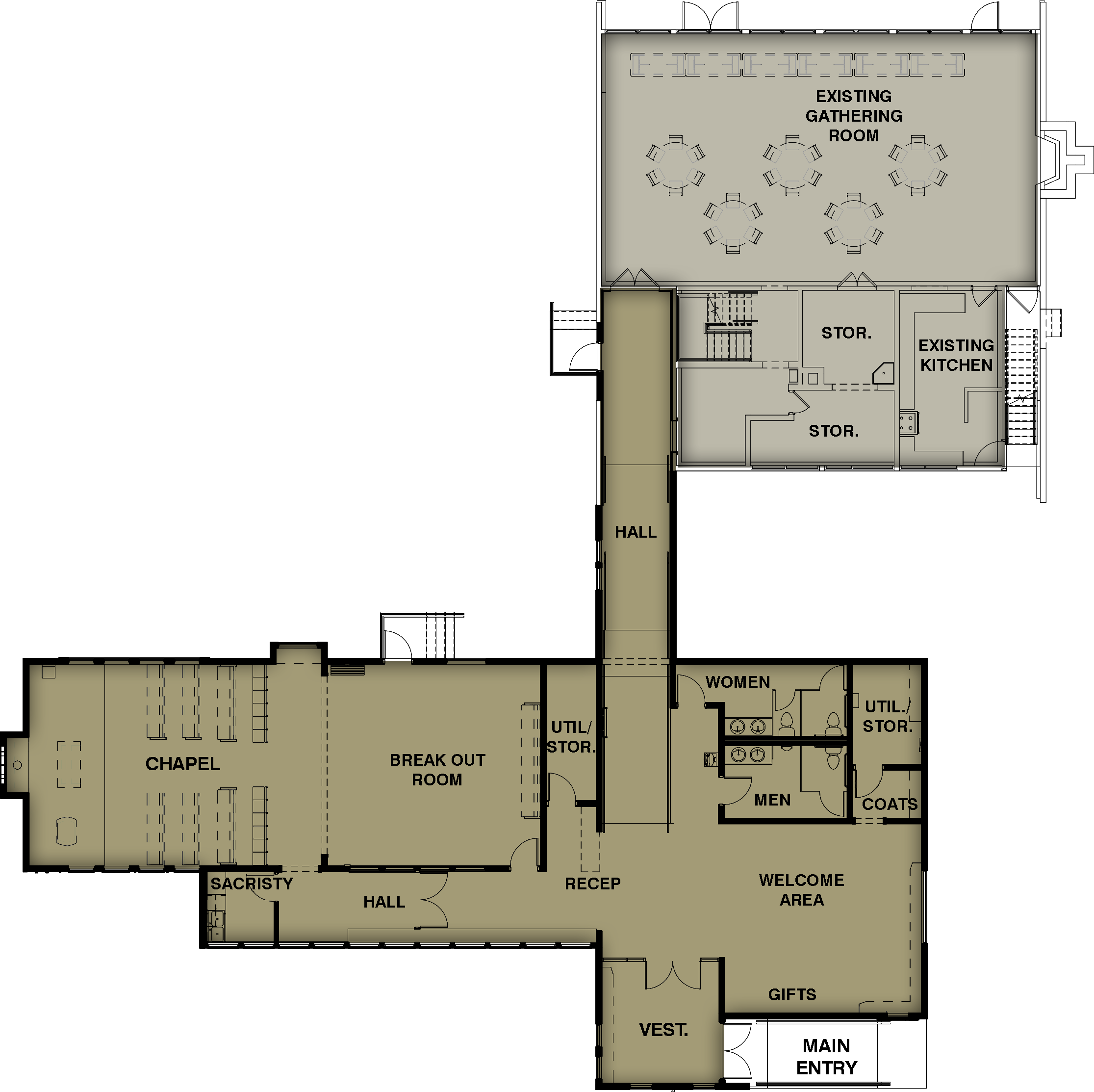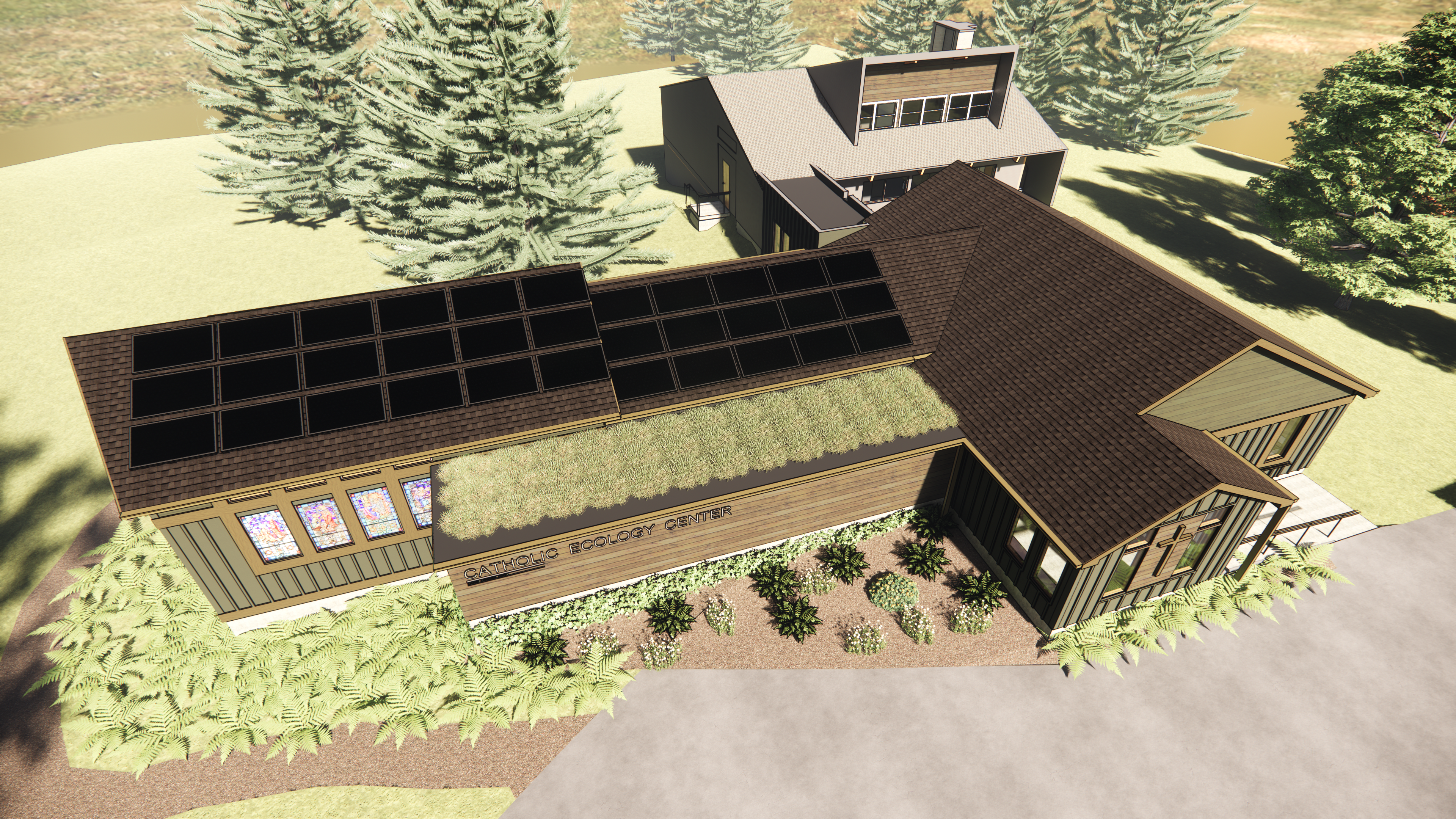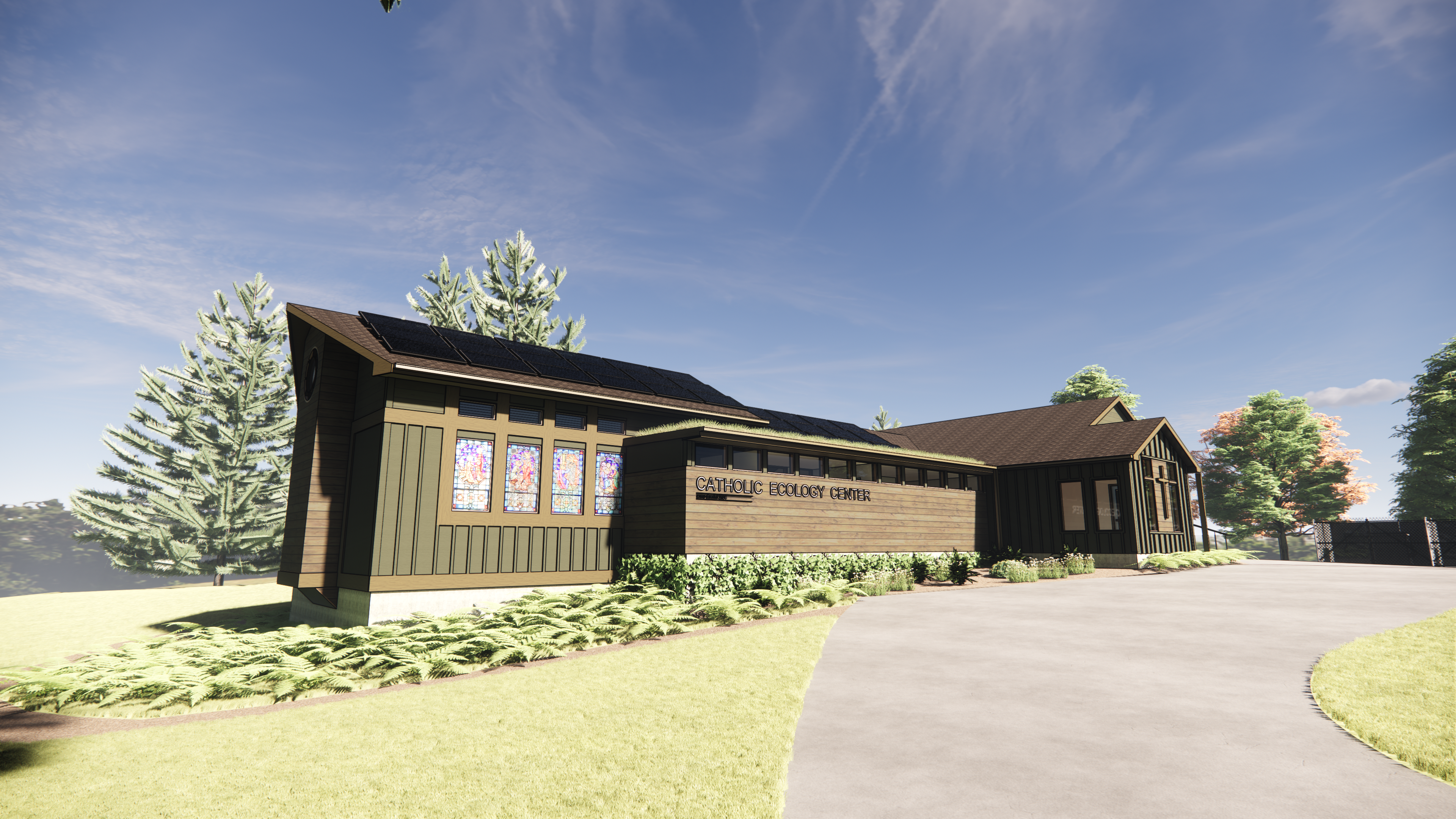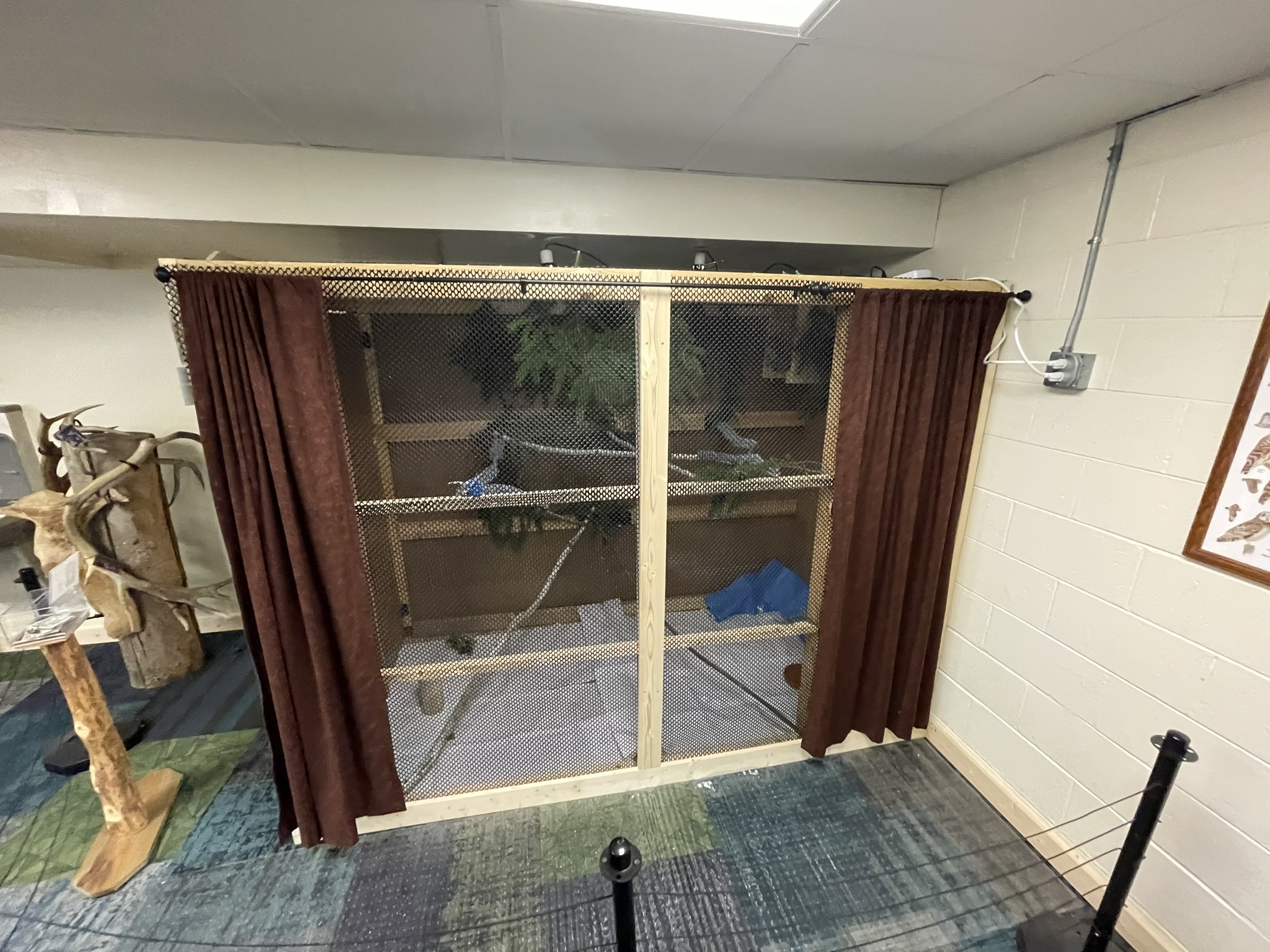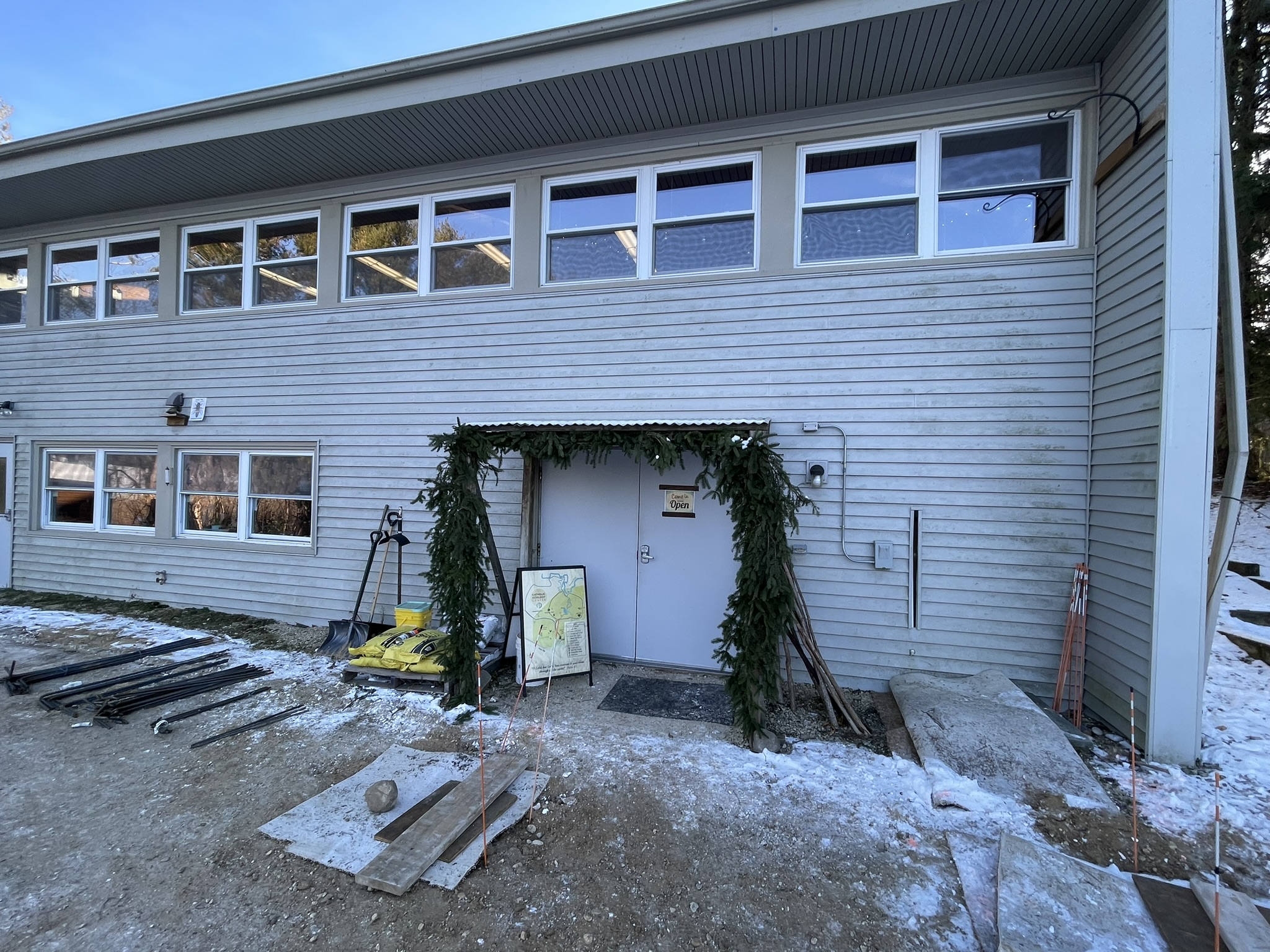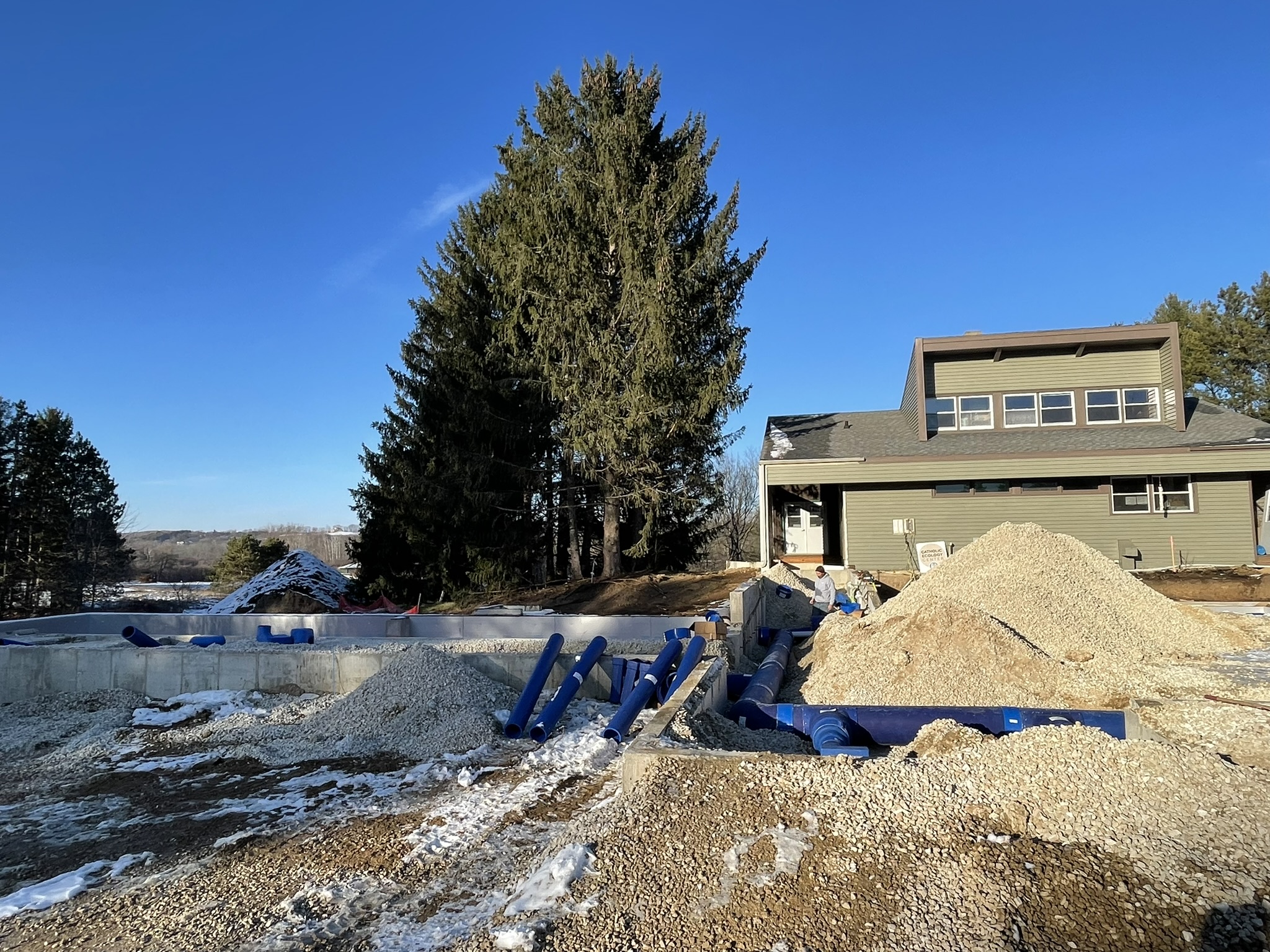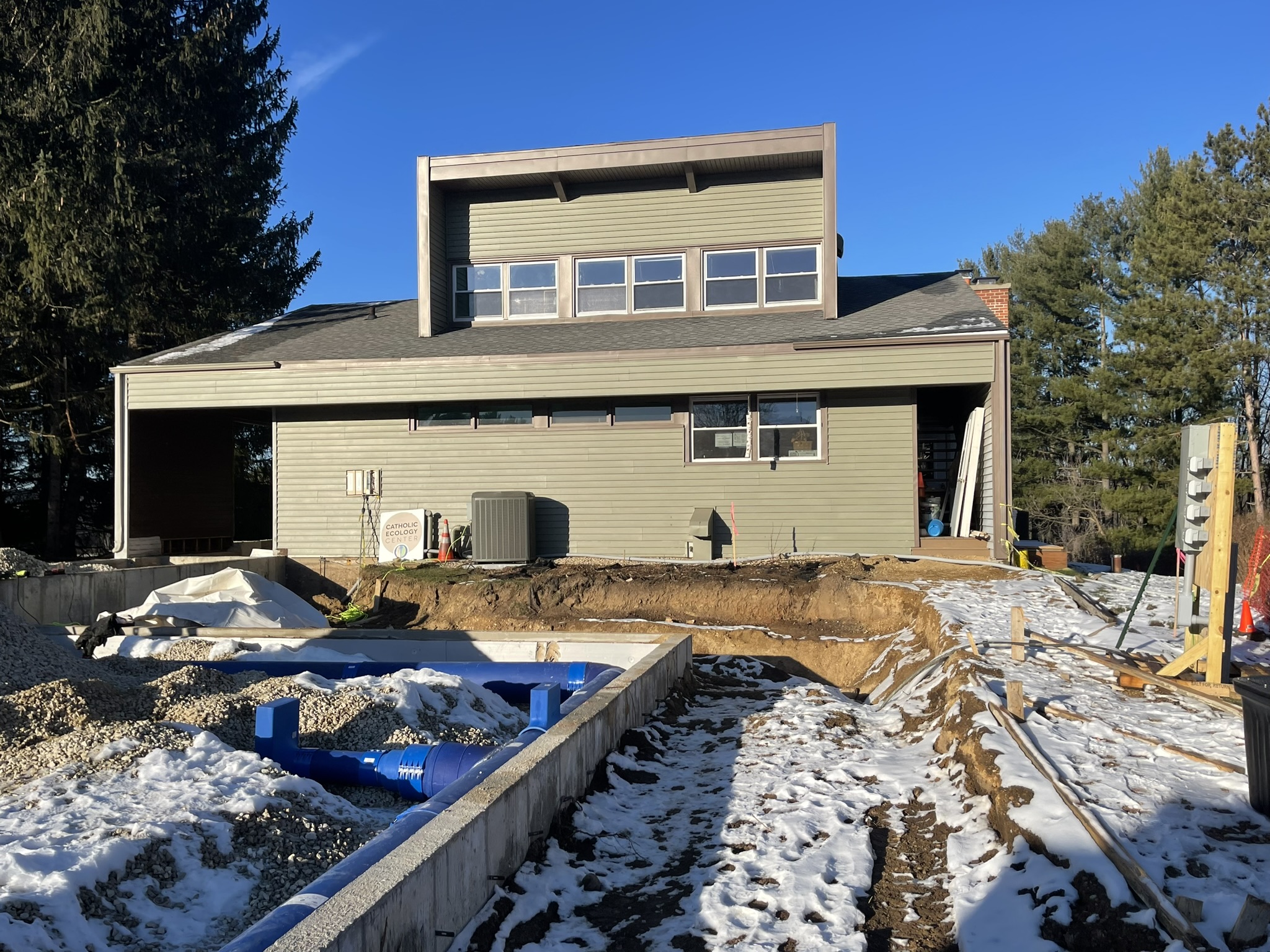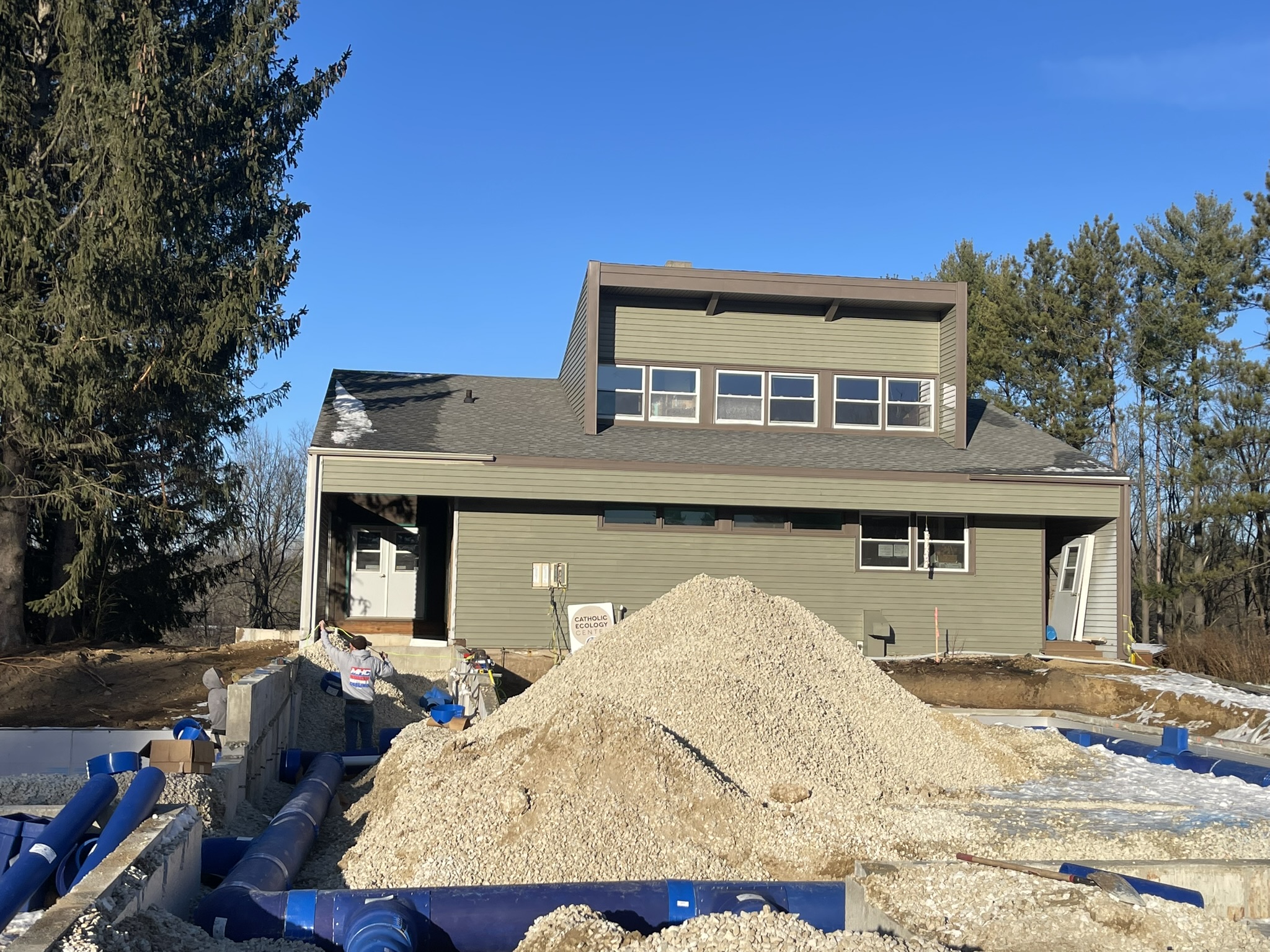
The Catholic Ecology Center in Neosho is undergoing a massive addition to its current building. The renovations, expected to be completed by summer, will include more room for worship, education and ecological stewardship. (Photo by Larry Hanson)
A wintry stillness has begun to descend on the ecosystems that thrive in the 60 acres of the Catholic Ecology Center — but that doesn’t mean it won’t be a busy season at the CEC.
Not only does the Neosho nature preserve have a full calendar of programming on the books for this winter but work recently began on the CEC’s 3,500-square-foot building addition and is expected to be completed by next summer.
Ground officially broke on the Wayne and Donna Neu Building, which will be built onto the existing structure at the CEC, on Oct. 9. This expansion will afford the Catholic Ecology Center more room for worship, education and ecological stewardship, said the group’s founder and Executive Director Joe Meyer.
“I think these next five years are going to be an amazing five years of seeing the way God can use the different programs we have,” said Meyer. “I definitely see growth here, being able to run programming at an accelerated rate for more people, more partnerships, and getting the word out there of who we are and what we do.”
“The fact that all of this is taking place within three years of opening our doors is just a testament to God’s providence and the need for the work that we do,” said Theresa Liebert, Program Coordinator at the CEC.
The CEC has been in existence since 2021, when the Laudato Si’ Project (founded in 2016 by Meyer) and corporate partner Sussex IM purchased the former Camp Winding River from the Girl Scouts of Southeast Wisconsin. It was a turnkey property for the ministry, with two buildings, a yurt, overnight cabins, campsite spaces, a pond, river and several miles of trails ready for use in Dodge County, west of Hartford.
Since that time, the CEC has been able to provide educational and formational programming for around 10,000 people. Plans for this expansion have been in the works for a couple of years, and the addition of a chapel was at the top of the CEC’s wish list.
“I am excited for so many aspects of the building addition, but being able to offer Mass and Adoration during our retreats is an invaluable opportunity,” said Liebert. “We could offer the most amazing retreat programming in the world, and it wouldn’t be able to compare with what God might do for one soul who spends a few minutes in Adoration. Many people have this idea that nature can replace a church, that you can receive something in nature which is purer than what is present within organized religion. And while nature can and should be a conduit to Christ, there is nothing more impactful than having the Eucharist present at our center.”
The building is named for the Neu family, who have a longstanding relationship with the land upon which the CEC is now situated. Donna Neu’s grandfather grew up in the farmhouse that still stands at the entrance to the property, and her husband Wayne also farmed some of the land prior to it becoming a Girl Scout camp. Wayne Neu still lives just down the road, and the couple’s children and grandchildren have become very involved in supporting the CEC and often visit the property for family events.
Eighty percent of the money needed to fund the addition has already been raised, though several sponsorships for liturgical items and several educational showcases within the building are still available. Construction for the project is being handled by design/build company MSI General of Nashotah.
When completed, the building — which will include a chapel, a welcome area, a breakout room and a viewing deck — will make for an enhanced visitor experience, Liebert said.
“The addition will allow the public to come in at any point, regardless of retreats or programming taking place in the rest of the building,” she said. With the current setup, visitor access to the main building is restricted if retreats or other programs are being held, though the grounds are always open to the public from dawn until dusk.
The CEC has also been intentional to incorporate sustainable energy sources and building practices in the design and construction of the building.
The new structure will have a “green roof” that can absorb 70 percent of rainfall and a “gray-water system” that will repurpose water from bathroom sinks, the bubbler and laundry machine to use in an irrigation system for the property’s native pollinator rain garden. The addition will be built using recycled and locally sourced materials as well as lumber that is certified by the Forest Stewardship Council.
The new chapel will feature stained-glass windows reclaimed from a church in Connecticut and a Communion rail dating from the early 1900s, reclaimed from nearby St. John Parish in Rubicon.
“It’s so special to be able to once again use a monstrance inside our chapel, which hasn’t held our Lord for 50 years,” said Liebert. “We are giving these liturgical items new life, and putting them to use in the way that they were originally intended to be used.”
The building speaks to the CEC’s mission to combine a love of faith with the call to care for creation, said Meyer.
“We’re trying to do things well, both beautifully with the architecture and the sacredness of the space of the chapel, and stained glass and those things that draw your hearts and minds to God, but then also doing things well and beautifully in terms of our mission of sustainability and really trying to capture that angle of things,” he said. “We want to call people to deeper faith, and we want to empower people to be able to live in a way that our faith calls us to as far as sustainability.”
For more information on the CEC or to donate to the building fund, visit catholicecologycenter.org/cec-building-addition.

